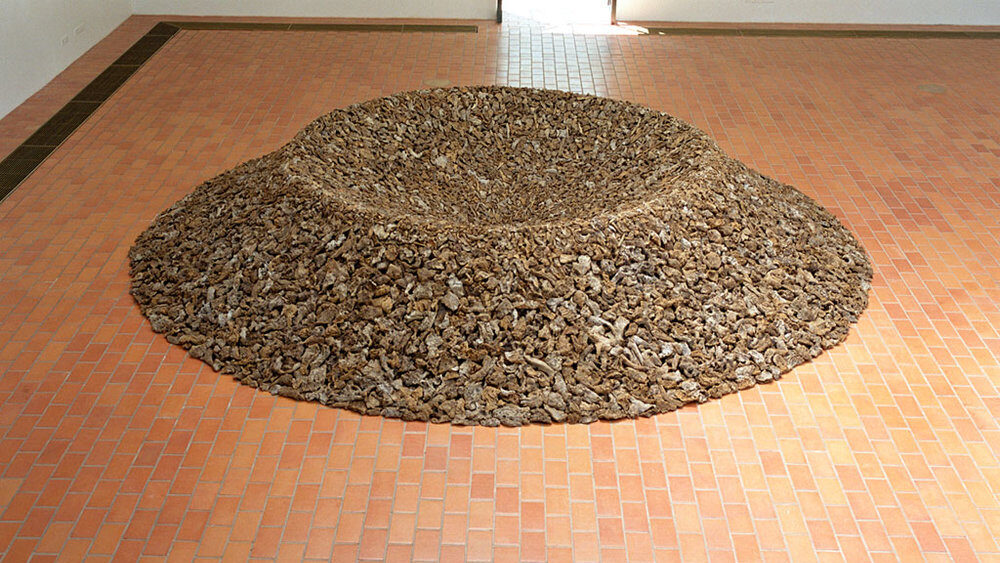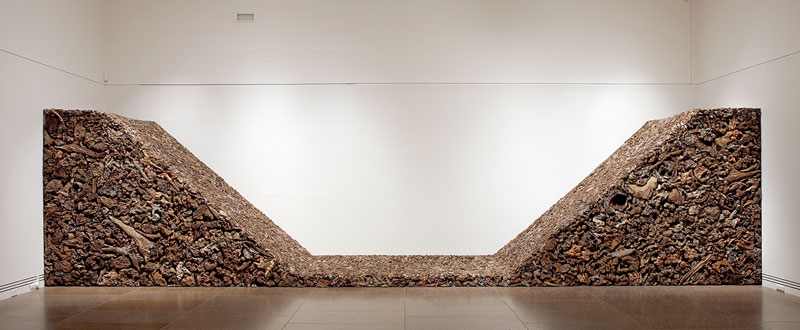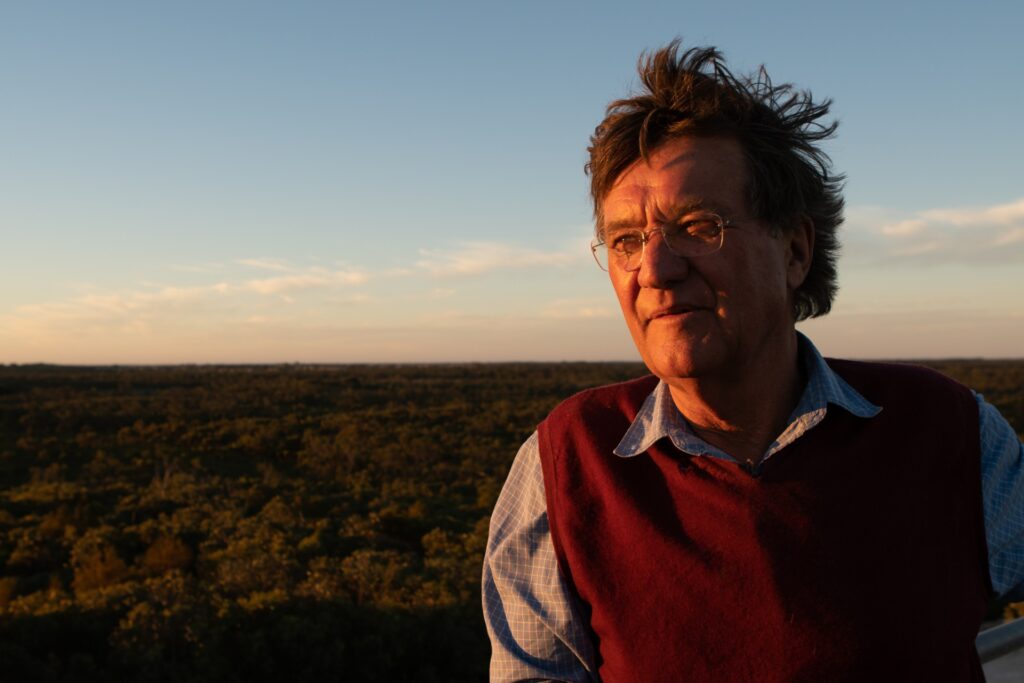Celebrating the life of James Darling AM: A tribute to one of NGT’s first and most loyal supporters
On Sunday the 13th October 2024, a large gathering of family and the many friends of James Darling AM assembled at the Norwood Concert Hall to celebrate his life and impact.
The chance to hear from a range of family and friends about his energetic, diverse, full and inspiring 77 years of life, left me feeling re-energized about what any one of us can achieve if we are prepared to commit ourselves to the things we care about. While of course this was a solemn occasion, I would also describe it as a nourishing experience – one that left those in attendance feeling positive and grateful for their opportunity to have played a part in his incredibly interesting life.
For me personally, James was a mentor, friend, and loyal supporter of what – during our many conversations – I recall referring to in the early days as “the NGT experiment”. In 2018, James and his partner Lesley Forwood were the first individual donors to establish a named fund in the NGT Foundation, and five years earlier in 2013 I shared some observations after a visit to their family farm – Duck Island. Looking back today, I am pleased to say that thanks to James, Lesley and the many other wonderful people that have followed in their footsteps over the years since, the NGT experiment is now an ongoing success story.
Given the many interesting – and always thought-provoking – conversations I had over the years with James, it was also an immense privilege to be asked by his family to share my observations about his relationship to the environment at his recent public Memorial Service.
For the many people that read the NGT newsletter and knew James but couldn’t attend, I am sharing my tribute with you here again today.
James and the Environment
James Darling is wearing a bandana over his mouth and nose, covered from head to toe with dirt and soot. He is emerging from the scrub within Gum Lagoon Conservation Park, immediately adjacent to his farm, on the back of his tractor.
The date was November 2006, and a lightning strike has set the park on fire, so James had disappeared into the scrub, aiming to create a control line to help prevent the fire from spreading.
James was renowned outside of the local district for his intellectual and artistic pursuits, but to those who saw him in his element on his farm, he was someone who could genuinely feel the pulse of the land and was always prepared to get his hands dirty, test ideas and make things happen.
His artistic work with mallee roots was a perfect extension of this ethos and also provided a physical expression of his unique ability to see the potential of things in nature, where others simply couldn’t.
I was stationed on a 4WD fire unit that day, and – as you can imagine based on my description – encountering James as he emerged from the scrub is forever etched in my mind.
I had known of James for several years and seen him at a few public events, mainly because of the successful establishment of a Cooperative Environmental Management Agreement between the State Environment Minister and Duck Island, which I recall was the first and is still possibly the only joint public/private management arrangement of its type in South Australia, but also for his interests in malleefowl, saltland agronomy and water management.
As this was the first chance to properly introduce myself to James face-to-face; I wasn’t going to miss my opportunity. Given the bushfire emergency unfolding around us, a long conversation clearly wasn’t possible, so I simply let him know my name and that I was keen to talk about the interests we had in common.
This was the unconventional beginning of a lasting friendship that I am proud to say I enjoyed with James ever since.
It would be remiss of me to not return to the theme of malleefowl, because these amazing birds, who invest so much of their time and energy in maintaining their mounds to incubate their eggs, to give the next generation a chance at life, were a species deeply admired and studied by James.
Having witnessed his passion for these remarkable birds, it is no accident that the design of their mounds would be an early recurring theme in James and Lesley’s mallee root installations.

Indeed, James knew the location of all the mounds around the beautiful bushland he preserved on Duck Island, which ones were active and even some of the personal characteristics of the individual birds tending them. James was also one of the first people in the Upper South East to warn of the threat posed by the explosion in feral deer numbers, as he began to observe their destructive impacts on the mounds of his beloved birds.
In my experience, James was a perpetual student of all facets of life, eager to learn new things, and then incorporate that knowledge to add more colour, depth and breadth to the expansive canvas that made up his unique perspective of the world.
His ability to closely observe and interpret nature extended well beyond his interest in malleefowl, and the insights he gained also informed his approach to land and water management.
My personal connection with James was cemented around our shared understanding – and I might also say at times frustration and despair – at the history and legacy of water management decisions imposed upon the South East landscape.
At a time when myself and a small minority of others from both within government agencies and the farming community were drawing attention to the risks of ground water drainage in the Upper South East on wetland environments, James was one of the few landholders who had already flipped the paradigm and understood the problem for what it was.
While he was prepared to work with the land and operate within its natural capabilities, including modifying his land management practices to suit its natural salinity and water regime, others simply expected nature to completely bend to their will, ultimately imposed upon the land through the construction of deep drains.

James was a visionary land manager who exemplified a different way of thinking, and his ability to ‘read the landscape’ through careful observation is a philosophical approach I have worked hard to learn, adopt and build upon in my own work to return water to artificially drained wetlands over the years since we met.
On that note, I would like to reflect on and share just how significant James, along with his partner Lesley, have been in supporting the work of Nature Glenelg Trust, a not-for-profit environmental charity I have led since founding the organisation 13 years ago.
They have loyally supported Nature Glenelg Trust’s work to restore nature across the agricultural regions of south-eastern Australia, in every way, including through bringing our work to the attention of their expansive network.
For believing in Nature Glenelg Trust and our vision for the landscape – at a time when others doubted this new model of non-government led environmental repair – and for their ongoing support ever since, I will be forever grateful.
To close and upon reflection, the fact that James could so seamlessly move between what – to many of us – might seem like disparate fields of endeavour, and have such a positive impact on every one of them, is the true measure of a life well lived, by the unique person we fondly remember today.
Farewell James: passionate environmental advocate, deep thinker, mentor and friend.


